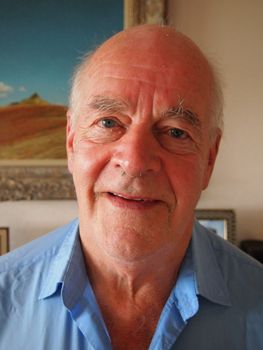David Heys Lithics Collection
Keith Boughey, 2020. https://doi.org/10.5284/1062863. How to cite using this DOI
Data copyright © Keith Boughey unless otherwise stated
This work is licensed under a Creative Commons Attribution 4.0 International License.
Primary contact
Keith
Boughey
Church Bank
Church Hill
Hall Cliffe
Baildon, W. Yorks
BD17 6NE
Resource identifiers
- ADS Collection: 3525
- DOI:https://doi.org/10.5284/1062863
- How to cite using this DOI
Introduction

David Heys was born in Lees, Oldham in 1937. On leaving school, he worked for the North Western Electricity Board as an apprentice before joining Yorkshire Electric as an engineer where he stayed for 31 years until 1991. He then worked for the home-shopping company Betterwear, first as an Area Manager and later in deliveries. His interest in the past was caught when he read Wrigley’s local 1911 publication, Saddleworth: Its Prehistoric Remains.
He first met fellow flint-collector Geoffrey Taylor in the 1960s while out flinting on March Hill, which was the beginning of a lifelong friendship, and together for almost every weekend in the 1980s and 1990s they combed farmland directly above Sutton Bank on the west edge of the North York Moors, and either side of the main Helmsley road, hunting for flints, as well as on the Lincolnshire Wolds, work which was to result in a truly remarkable collection of archaeological material.
After Taylor's death, Heys continued flint collecting across the western and central North York Moors but also, as he had done before he met Taylor, in the Yorkshire Dales, South Pennines and Peak District nearer his home. He now lives in quiet retirement in Oldham, where his collection currently resides.
Nothing of this collection has ever been published, referred to or even hinted at in any published work, apart from a single publication of an Early Bronze Age Collared Urn assemblage they discovered and excavated on the West edge of the North York Moors, nor did Heys take any notes or keep any diaries so there is no personal written record of what was done or found or where, apart from simple labelling (date and location) on the several hundred matchboxes in which the bulk of the collection is stored.
As with so many similar private lithics collections, the intention is to at least bring it into and secure it for the archaeological record which will add to and enhance our understanding of those areas in which the lithics were collected, which in turn should bring it to the attention of both the archaeological community and the wider public, and hopefully even see it or at least some part of it finally published.
The deposition of this archive was funded by the Yorkshire Archaeological & Historical Society and the Open Access Archaeology Fund.





